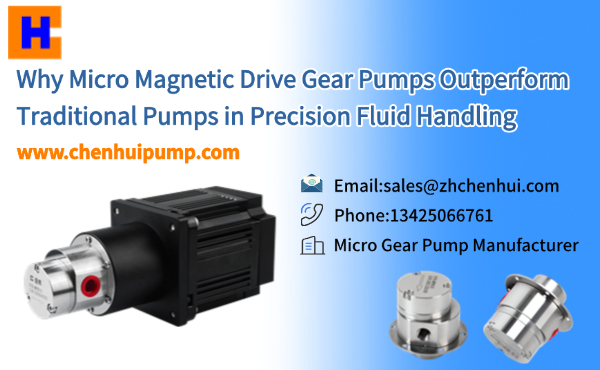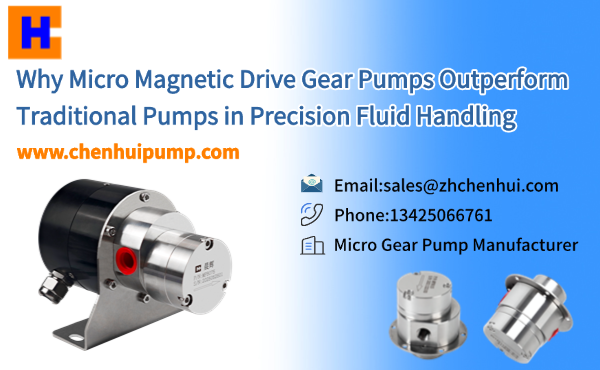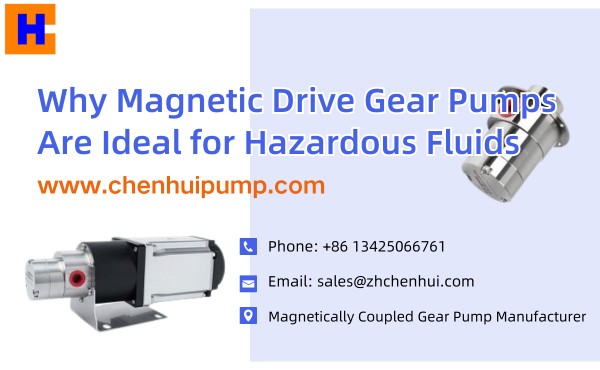When selecting the right pump for your application, it is crucial to understand the difference between a gear pump and a centrifugal pump. These two pumps operate based on distinct principles, each with its own strengths and limitations.
This article will help you distinguish between these pumps, understand when to use each, and determine which is most suitable for your needs.
What is a Gear Pump?
A gear pump is a type of positive displacement pump. Positive displacement means that the pump moves a fixed volume of fluid per cycle, regardless of the pressure within the system.
Gear pumps are designed to transport fluid by trapping a fixed amount of liquid in the cavities between meshing gears and forcing that liquid through the discharge port.
How it works:
In a gear pump, the rotating gears mesh together, creating a sealed chamber. As the gears rotate, the volume between the teeth of the gears increases, creating a partial vacuum that draws the liquid into the pump.
The liquid is then transported around the gears and forced out through the discharge port. The flow remains constant, irrespective of the system’s pressure.
Common Applications:
Gear pumps are widely used for high-pressure applications and in systems that require precise fluid handling. They are particularly effective in metering applications where accurate flow control is essential.
Gear pumps are ideal for handling high-viscosity fluids like oils, slurries, and pastes.
What is a Centrifugal Pump?
A centrifugal pump operates based on a completely different principle. Unlike a gear pump, it relies on kinetic energy to move the fluid. The pump consists of an impeller that is powered by a motor to spin rapidly.
The spinning motion of the impeller accelerates the liquid, increasing its velocity. As the liquid exits the impeller, it converts its velocity into pressure, moving the fluid towards the discharge point.
How it works:
In a centrifugal pump, the impeller draws the fluid into the center of the pump, where it is rapidly spun. The centrifugal force created by the impeller pushes the fluid outward, increasing its speed.
Once the fluid reaches the outer edges of the impeller, it is directed into the discharge pipe. The pump relies on the continuous motion of the impeller to keep the liquid flowing.
Common Applications:
Centrifugal pumps are typically used in applications requiring high flow rates and low pressures. These pumps are excellent for transferring low-viscosity fluids, such as water, chemicals, and light oils.
Common industries using centrifugal pumps include water treatment, HVAC systems, and general industrial fluid transport.
Key Differences Between Gear Pumps and Centrifugal Pumps
Understanding the differences between gear pumps and centrifugal pumps is vital in choosing the right pump for your application. Here are some of the key distinctions:
1. Operating Principle
- Gear Pump: Gear pumps are positive displacement pumps, meaning they move a fixed volume of fluid with each rotation of the gears. The flow remains constant, and the pump creates pressure by physically trapping and forcing the fluid through the system.
- Centrifugal Pump: Centrifugal pumps work by converting kinetic energy into pressure. The rotating impeller accelerates the fluid, and the resulting high-speed motion increases the fluid’s velocity before converting it into pressure.
2. Flow Characteristics
- Gear Pump: The flow rate of a gear pump is consistent, regardless of pressure changes within the system. This makes it ideal for applications requiring precise metering or where a constant flow is crucial.
- Centrifugal Pump: The flow rate of a centrifugal pump decreases as the system pressure increases. This pump is best suited for applications where the pressure requirements are lower or relatively constant.
3. Viscosity Handling
- Gear Pump: Gear pumps excel at handling high-viscosity fluids. The positive displacement design means that they can transfer thick liquids, such as oils, slurries, and even food pastes, with minimal performance loss.
- Centrifugal Pump: Centrifugal pumps are less efficient when handling high-viscosity fluids. As the viscosity increases, the efficiency of centrifugal pumps drops, and their ability to maintain a consistent flow diminishes.
4. Pressure and Efficiency
- Gear Pump: Gear pumps are capable of handling higher pressures compared to centrifugal pumps. They provide a consistent flow and pressure, even in high-pressure systems.
- Centrifugal Pump: While centrifugal pumps are effective for large volumes of fluid, they are less efficient at higher pressures. Performance typically peaks at a certain pressure, and further increases in pressure can lead to efficiency losses.
5. Applications
- Gear Pump: Gear pumps are commonly used for precise metering, high-pressure systems, and applications that require accurate fluid transfer. Industries such as the oil and gas, food processing, and chemical industries frequently rely on gear pumps.
- Centrifugal Pump: Centrifugal pumps are ideal for applications requiring high flow rates and low pressure. They are widely used in water treatment plants, irrigation systems, HVAC systems, and chemical processing where large volumes of fluid need to be moved quickly and efficiently.
When to Use a Gear Pump
A gear pump is the ideal choice for applications requiring precise control over the flow of fluid, especially when handling high-viscosity liquids or high-pressure environments. They provide constant flow rates, making them perfect for applications where accurate fluid transfer is crucial.
Advantages:
- Consistent Flow: Gear pumps maintain a steady flow, regardless of pressure variations.
- High Pressure: They can handle high-pressure systems effectively.
- Precise Metering: Gear pumps are commonly used in applications that require accurate and consistent fluid measurements, such as in food processing or chemical dosing.
- Industries: Gear pumps are frequently used in the oil and gas industry, food processing, pharmaceuticals, and automotive applications.
When to Use a Centrifugal Pump
A centrifugal pump is the best choice for applications requiring high flow rates and relatively low pressures. These pumps are ideal for handling low-viscosity liquids and can efficiently transfer large volumes of fluid with minimal maintenance.
Advantages:
- Low Maintenance: Due to the simple design with fewer moving parts, centrifugal pumps typically require less maintenance.
- Cost-Effective: They are generally more affordable and efficient for high-flow applications.
- Versatility: Centrifugal pumps can handle a wide range of liquids and are used in many industries for general fluid transfer.
- Industries: Centrifugal pumps are commonly used in water treatment, HVAC systems, chemical processing, and petrochemical industries.
Conclusion
In conclusion, gear pumps and centrifugal pumps are both effective fluid transfer solutions, but they excel in different applications. Gear pumps are best suited for precise fluid metering, high-pressure systems, and high-viscosity fluids.
On the other hand, centrifugal pumps are ideal for large-scale fluid transfer in low-pressure systems and are most efficient with low-viscosity fluids.
To choose the right pump for your application, consider the type of fluid being handled, the required pressure, and the desired flow rate. For high-flow, low-pressure applications, centrifugal pumps are the go-to solution. For accurate, high-pressure, or viscous fluid handling, gear pumps are the better option.























